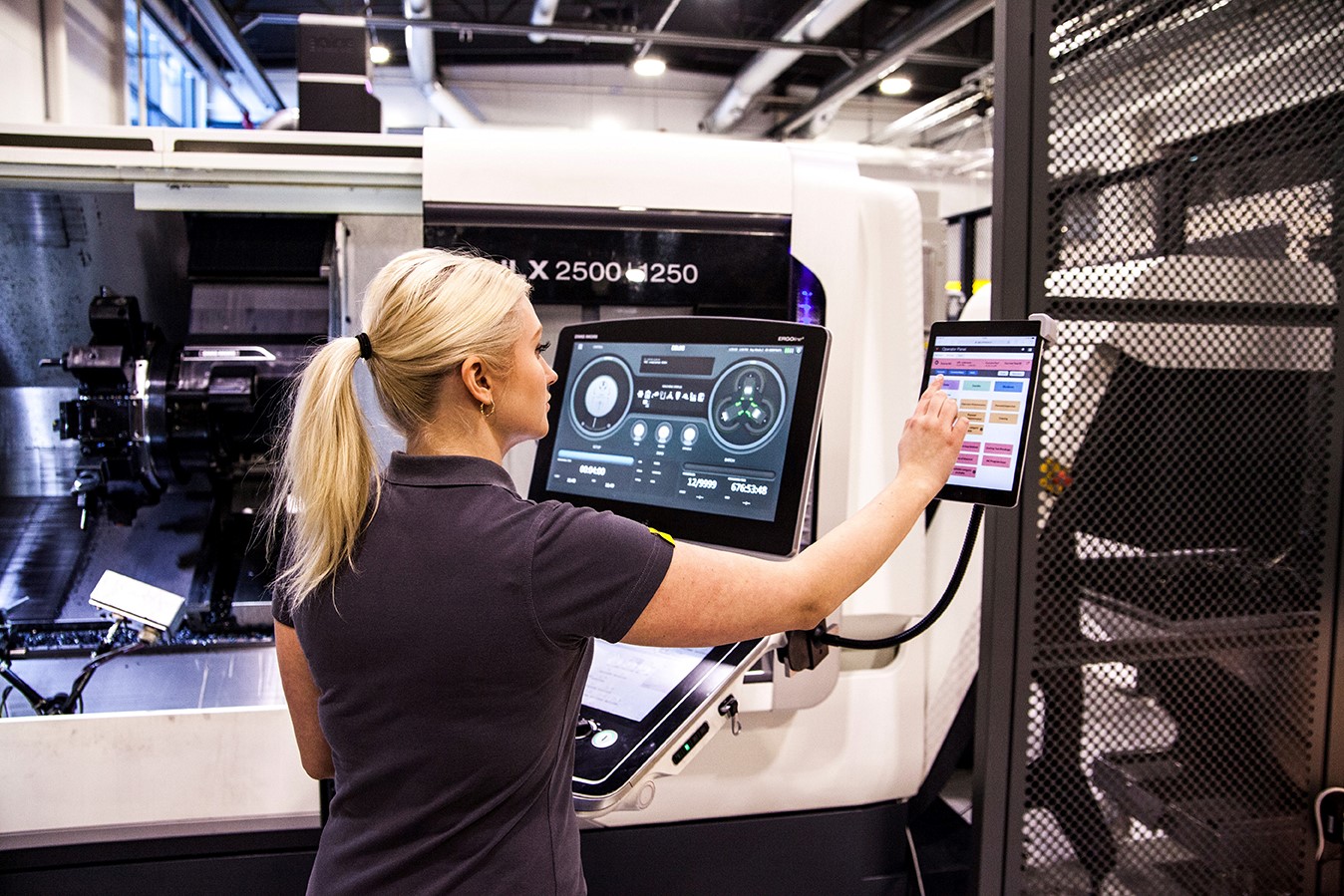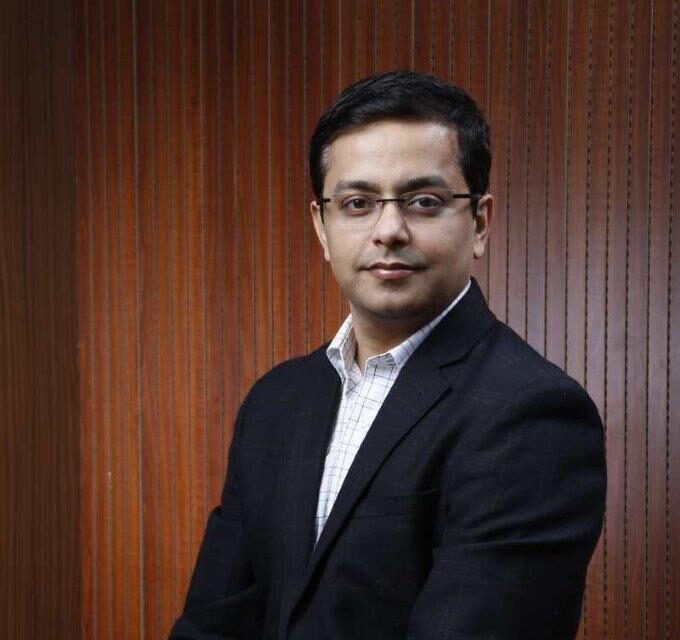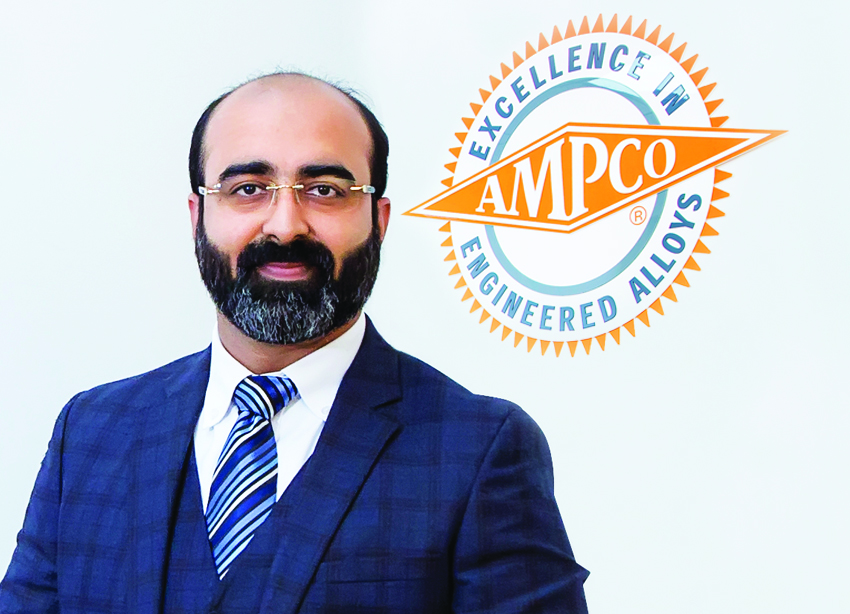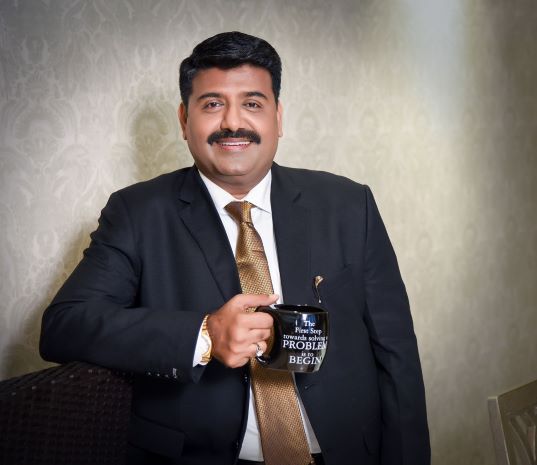Atmanirbhar Bharat is a Wake-Up Call
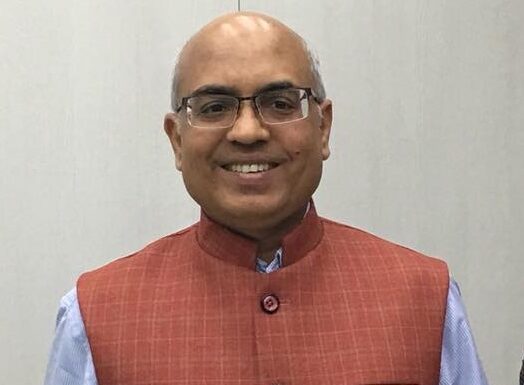
Ambassador Akhilesh Mishra, India’s Ambassador to Ireland, in his Keynote highlighted many significant facts about the economic and industrial strengths of Ireland, and how the sector stakeholders in India and Ireland can benefit from them.
On day five of Industry Samurai Conference 2021 held virtually, we had the privilege of hosting Ambassador Akhilesh Mishra, India’s Ambassador to Ireland, as the Keynote Speaker. Ambassador Mishra has over three decades of experience in diplomacy, covering political, security and geo-strategic affairs; economic & commercial, investment & technology issues; education, research & innovation; cultural & soft power engagements; and India’s developmental partnership with other countries.
Before joining the Embassy in Dublin in October this year, Ambassador Mishra was deployed in the Ministry of External Affairs as Officer on Special Duty (Political) from and Head of Development Partnership Administration (dealing with India’s official development assistance and dialogue on international development issues). Earlier, he was Director-General of the Indian Council for Cultural Relations (ICCR), New Delhi.
His previous roles include ambassador of India to Maldives (2016-19); Consul General of India in Toronto, Canada (2013-16); Joint Secretary in the Ministry of External Affairs dealing with India’s relations with Nepal and Bhutan (2011-13), and Joint Secretary in charge of Multilateral Economic Relations Division (2010-11). Ambassador Mishra’s other roles were the Deputy Chief of Mission in Kabul, Afghanistan (2008-10); Deputy High Commissioner Dar-es-Salaam, Tanzania (2005-08); Deputy Consul General in San Francisco, USA (2001-05); and Deputy Secretary dealing with Bangladesh in the Ministry of External Affairs, New Delhi (1999-2001); and, in different capacities in Indian Embassies in Kathmandu, Nepal (1996-99); Rome, Italy (1993-96); and, Lima, Peru (1991-93).
Ambassador Mishra speaks Spanish, Italian and Nepalese and knows, among Indian languages, Hindi, and Sanskrit, besides English. He holds the degrees of BTech and MTech, from the Indian Institute of Technology, Banaras Hindu University. Sharing, edited excerpts of the speech and a Q&A session with DMI’s Editor Aanand Pandey.
Ambassador Akhilesh Mishra: The unprecedented severity and spread along with the shocking impact of the coronavirus pandemic has brought to the fore several important questions about globalisation, international relations, and interconnectedness. In the post-Covid-19 world, we have come to realise that not only our economies are intertwined, but also no aspect of life can exist in isolation. Our health, well-being, and social interactions, all are influenced by international developments.
At the same time, we have become acutely aware of the need for trust and transparency in the operation of our global networks and supply chains, so that dependencies remain mutual strength for each other, and they do not become a kind of cohesive instrument or weaponised to exploit individual vulnerabilities.
We need to rethink very seriously the evolving, fluid, and dynamic situation with regard to international trade and supply chains. It is no longer possible to continue in a business-as-usual manner. We need to have a broader integrated approach to manufacturing. We cannot continue as we have been for the past decades and cannot look at manufacturing in a segmented, compartmentalised manner.
The second aspect of the contemporary situation that I want to highlight is that this is the time when people of India are celebrating ‘Azadi ka Amrit Mahotsav’, as part of India’s 75th year of Independence. This is a historic time because 75 years of India’s democracy gives us a lot to celebrate, rejoice in and also gives us an opportunity to do serious and candid stocktaking and set important goals. This is a great historic moment where we are holding this discussion.
Many of us, particularly those born after Independence, do not fully appreciate the significance of Indian democracy. The successful, vibrant democracy of India demolishes the notions that certain countries and certain situations held that there a place that had low human development indices in the early years of independence] was not fit for democracy.
When India declared itself a democratic republic with a universal adult franchise – with just about 18% of literacy rate and widespread hunger and poverty – many western constitutional experts had declared that the Constitution of India, which is the largest constitution in the world, will fall apart in a few years and the democracy in India was bound to fail. But the people of India have defied all sceptics and over a period of time, India not only emerged as a strong democracy but also as a more proud, integrated and forward-looking democratic country.
If we look at the map of the world, we notice that India stands out as a strong bedrock and an anchor of democracy in a region that has often fallen to dictatorial and authoritative regimes. India is indeed an ideological frontline zone for values of democratic accountability, the rule of law, and pluralism.
We are quite proud and privileged that we have the visionary leadership of PM Narendra Modi. It is under his dynamic and decisive, holistic approach to development, India is a fast-growing major economy. This year, the growth rate that we are expecting to be is 9.5%. India recorded its highest ever foreign direct investment (FDI) inflow of over US$ 81 billion in 2021. In the past six years, we have attracted US$ 358 billion worth of FDI, which is 55% higher than US$ 231 billion in the previous six years.
Foreign exchange reserves have crossed US$ 640 billion, which is the fourth largest in the world. If you look at the pace of transformation and the construction is really astounding. Road construction is apace at around 45km per day. In just a few years, 100 million toilets have been constructed, 100 million LPG connections have been given, over 250 million gas connections have been established, and 38 new airports have been operationalised in India. And if you look at how the people of India dealt with the coronavirus pandemic and how in a short span of time India administered 1.3 billion doses. This is an encouraging sign for India’s democracy and its effectiveness to deliver.
I wish to highlight that if you look at the bigger picture, we find that there is an overarching, unifying pattern in PM Modi’s multi-sectoral initiatives. And that I feel is far more significant than the pace of execution and growth itself. There has been a paradigm shift in the development strategy of India. It is no longer the old trickle-down model but a bottom-up growth model, which focuses on mainstreaming the bottom of the pyramid. Thrust is on social equity through empowering the poorest of the poor people, enabling them to contribute to the fullest of their potential and become engines of socio-economic growth rather than being dependent on charities and roll-outs. That approach is truly historic for a country like India.
If you look at Pradhan Mantri Jeevan Jyoti Bima Yojana, about 60 million people have been insured; PM Suraksha Yojana has insured 160 million people; Atal Pension Yojana has benefited about 16 million people and Mudra Yojana has supported about 86 million beneficiaries, including financial support provided for women and self-help groups. All these initiatives are provided massive support to the poorest of the poor people in India. They have bought dignity to the people at the grassroots level. That is going to be transformational for the new India.
As Ambassador of India to Ireland, let me also briefly touch upon the historic timing and opportunity that I see for the India-Ireland relationship. Quite understandably, India’s focus on Europe has traditionally been on the UK. We have not paid enough attention to Ireland and how remarkably it has transformed. A lot of fantastic opportunities have opened up for the Indian business community.
The ties between India and Ireland are very close and historic since the 19th-century Irish educationists, medical and engineering experts played an important role in the development of India. The connections between the Indian national movements and Irish freedom fighters were quite strong. Ireland’s constitutional experts influenced the drafting of our own constitution. And the directives of state policies have been borrowed from the Irish constitution.
India and Ireland have rich and strong economic and cultural ties. Currently, we have €1 billion of bilateral trade and trading services of around €4 billion. We have a 45,000-strong Indian diaspora in Ireland and 5,000 Indian students. The current Deputy Prime Minister of Ireland has Indian heritage. He will assume office in 2022 as the next PM of Ireland.
I think we need a sharper focus on the opportunities which Ireland offers to us. It is a country of just 5 million people and 2.3 million workers but has built an economy of close to half-a-trillion dollars. Another significant aspect that is not so well-known is that Ireland has a 75-million-strong diaspora settled across the world with 45 million people of Irish heritage settled in the US. Even more, 23 American presidents have been of Irish origin. Ireland has the biggest per capita tech hub in the knowledge economy
. About 1,600 multinational companies, 9 out of 10 world’s top IT companies, 9 out of 10 top pharma companies, 14 out of 15 top aviation liaison companies are headquartered in Ireland. It has a vibrant start-up segment, and the VC funding ecosystem in Ireland is quite robust. Ireland has the highest start-up success rate in Ireland at 16% compared to 6% in European Union on average and 1-2% in India. Ireland’s IT export is about US$45 billion, and the pharma exports are US$75 billion.
As the focus of this conference is manufacturing, I am happy to share that by starting from a very rural agrarian economy, Ireland has established itself as a robust manufacturing hub with US$120 billion of exports in high manufacturing sectors. It is one of the largest exporters of pharmaceutical products and the largest producer of medical tech devices, data-processing machines, and nutrition products.
I wish to urge my friends in India to look at Ireland as the country that not only connects us with the European Union but also has proximity with the vibrant market of the UK. Even more, it offers trans-Atlantic connectivity with the US and Canada. Ireland should be looked at destination for more ambitious Indian manufacturing endeavours. Lastly, I would urge that we should have a strategic look at Ireland and have a broader multi-sectoral people connectivity in business with the country.
As India’s representative to Ireland, I am always at the disposal of our Indian friends in every sector, whether it is business, education or start-up or cultural personalities, anyone who is seeking information about Ireland or seeking assistance and guidance in connecting with Ireland, I am always at your service.
Question: What is your message to the stakeholders of the Indian manufacturing sector, which has been dealing with the challenges brought on by the pandemic?
Ambassador Mishra: The foremost lesson and message to our manufacturers in India is that there is a need for better preparation for contingencies. Coronavirus is not the last big disruption to normal life to be expected. Therefore, business as usual is not going to help us. The new reality of globalised interconnected post-Covid-19 is that even high gross domestic product (GDP), per capita income or great micro-economic indicators can’t or do not always insulate you from the emerging challenges. Therefore, the priority is that and also the Coronavirus situation has shown us that the priorities need to change in order to deal with crises. The notion of national security and well-being and profile of a country standing and soft power of a country depends now on far more different variables, much broader metrics than it has been any time in the past. The healthcare, education system, the resilience of internal delivery and supply chain systems, reliability and security of your digital infrastructure, are all very critical parts of national security and our economic well-being. For a country of the size of India, no one else can come to our rescue. That is why the Atmanirbhar Bharat campaign of PM Modi is not rhetoric, but this is a wake-up call for the nation. That has to be a broad-based, national people’s mission. Similarly, Vocal for Local is not a political message, it is a practical message which is critical for a country of India’s size to ensure shorter and resilient supply chains that will require us to make maximum use of the local resources. This is a historic time for us and also the coronavirus has given us a shock, jolt, a wake-up call to completely retransform, reorient and restructure our thinking. I would urge that each one of us who is involved in planning our manufacturing sector, should critically and minutely review the entire 360-degree process of the supply chain and identify vulnerabilities and address them, prepare for contingencies in advance, pre-emptively.
Similarly, it is useful to think of the contingencies and be better prepared, diversify your supply chains to the extent possible and focus on shorter supply chains, which would be advisable.
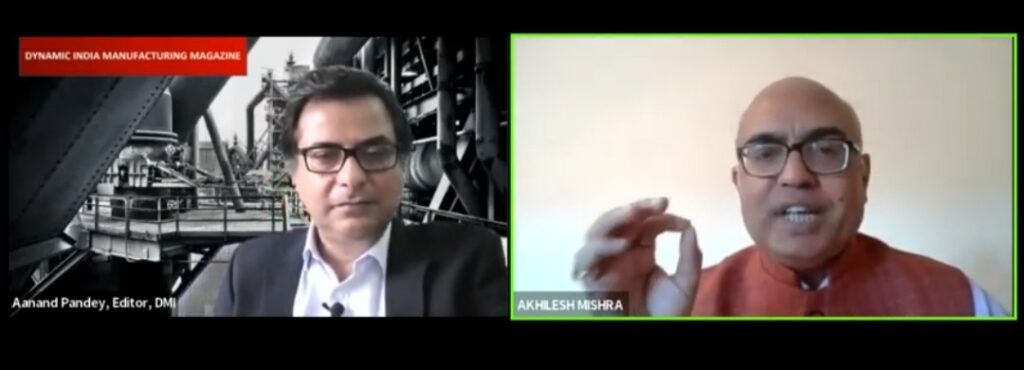
Question: What are the biggest strengths of India’s manufacturing sector in your view?
Ambassador Mishra: The biggest strength of the Indian manufacturing sector remains Prime Minister Modi, who brings to India his unprecedented, first-hand practical experience. His knowledge pertaining to the grassroots level of India in socio-economic transformation, not just in conceptualising plans but implementing them as the Chief Minister of Gujarat that remains a great asset for India. And if you look at his vision of Make in India, Vocal for Local or Atmanirbhar Bharat, these are inspiring the masses. A lot of initiatives have been taken up by Prime Minister Modi like the production-linked incentives scheme (PLI) for which about Rs 2-lakh-crore has been earmarked for the next five years. There will be a huge boost to the US$520 billion of manufacturing in the next five years.
Similarly, the nation monetisation pipeline, again it will be a game-changer for releasing assets for productive use. The institutional reform to make India a better place to do business. The 44 Labour Laws have been assimilated into just four codes. The logistical bottlenecks, which have been hampering manufacturing in India, like the plethora of taxes, have been combined into one single Goods and Services Tax (GST). The physical transportation linkages and inefficiencies of ports and roads, which have been hampering our manufacturing sector, are being addressed in a quite systematic manner. The idea of port-related development, taking into account the holistic connectivity issues, construction of highways, railways, Metros, inland waterways, are very significant support mechanisms that are being created by the current government. We should not let this opportunity pass by.
Second, the most important asset for Indian manufacturing is our unique demographic dividend advantage. Of about 1.38 billion population, about 68% are under 35 years of age, with a majority of them being in the age group of 18-35. By 2030, India will have one-fourth of the world’s skilled manpower pool, so not only Indian manufacturing but also global manufacturing will need the support of India’s technical manpower.
The skillsets of India’s manpower are growing. We have over 1,000 universities, more than 42,000 colleges, which graduate more than 39 million students every year. This is a great strength for us.
The third aspect of India which can be leveraged as strength is our soft power, our democracy and our culture. In a world shaken by the pandemic, we have seen the criticality of the trusted partnerships, trusted relationships, a rule-based order and that is what India as a democracy and as an inherently pluralistic society brings to the international community. This remains a huge strength. India’s soft appeal is going to grow in the years to come and our industry can leverage that too.
By – Rajiv Dogra
E copy of the magazine – https://www.machineinsider.com/dynamic-manufacturing-india-nov_dec-2021-edition/


